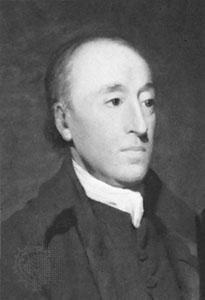James Hutton (James Hutton)

James Hutton inherited from his father the Berwickshire farms of Slighhouses, a lowland farm which had been in the family since 1713, and the hill farm of Nether Monynut. In the early 1750s he moved to Slighhouses and set about making improvements, introducing farming practices from other parts of Britain and experimenting with plant and animal husbandry. He recorded his ideas and innovations in an unpublished treatise on The Elements of Agriculture. This developed his interest in meteorology and geology. In a 1753 letter he wrote that he had “become very fond of studying the surface of the earth, and was looking with anxious curiosity into every pit or ditch or bed of a river that fell in his way”. Clearing and draining his farm provided ample opportunities. Playfair describes Hutton as having noticed that “a vast proportion of the present rocks are composed of materials afforded by the destruction of bodies, animal, vegetable and mineral, of more ancient formation”. His theoretical ideas began to come together in 1760. While his farming activities continued, in 1764 he went on a geological tour of the north of Scotland with George Maxwell-Clerk, ancestor of the famous James Clerk Maxwell. In 1768 James Hutton returned to Edinburgh, letting his farms to tenants but continuing to take an interest in farm improvements and research which included experiments carried out at Slighhouses. He developed a red dye made from the roots of the madder plant.
James Hutton had a house built in 1770 at St John’s Hill, Edinburgh, overlooking Salisbury Crags. This later became the Balfour family home and, in 1840, the birthplace of the psychiatrist James Crichton-Browne. Hutton was one of the most influential participants in the Scottish Enlightenment, and fell in with numerous first-class minds in the sciences including John Playfair, philosopher David Hume and economist Adam Smith. Hutton held no position in Edinburgh University and communicated his scientific findings through the Royal Society of Edinburgh. He was particularly friendly with Joseph Black, and the two of them together with Adam Smith founded the Oyster Club for weekly meetings. Between 1767 and 1774 Hutton had close involvement with the construction of the Forth and Clyde canal, making full use of his geological knowledge, both as a shareholder and as a member of the committee of management, and attended meetings including extended site inspections of all the works. At this time he is listed as living on Bernard Street in Leith.[17] In 1777 he published a pamphlet on Considerations on the Nature, Quality and Distinctions of Coal and Culm which successfully helped to obtain relief from excise duty on carrying small coal. In 1783 he was a joint founder of the Royal Society of Edinburgh.
Born
- June, 03, 1726
- Edinburgh, Scotland
Died
- March, 26, 1797
- Edinburgh, Scotland



